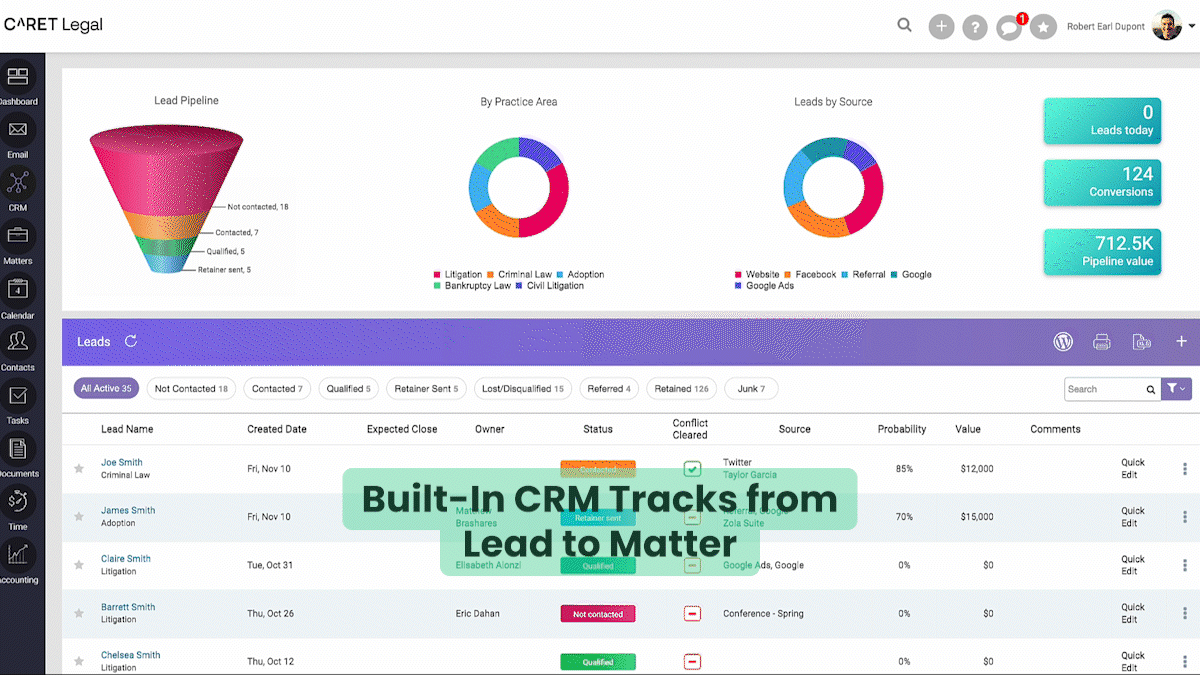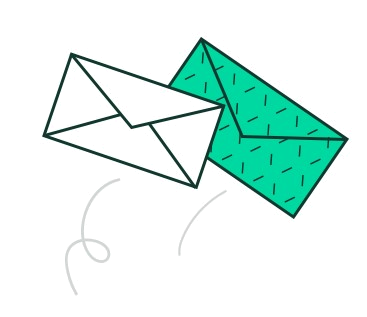The big takeaways:
- Litigation costs rise when deadlines are missed, workflows are fragmented, or documents are disorganized.
- An integrated litigation management system reduces overhead by automating routine tasks and centralizing case information.
- CARET Legal helps firms cut costs by streamlining docketing, task management, billing, and client communication in a single platform.
Litigation can be expensive. For many law firms, the price of handling claims does not come from billable hours alone but from inefficiencies that push litigation costs higher than they need to be. Missed deadlines can result in sanctions or reputational damage. Inefficient document workflows cause staff to spend unnecessary hours locating or recreating files. Manual data entry increases the risk of errors and duplicates work that could be automated.
These factors add up, leading to higher litigation fees for clients and lower profitability for firms. In competitive markets, clients increasingly expect efficiency as part of the service they are paying for. Firms that can deliver accurate, timely work without wasting resources gain a clear financial advantage. This is where a litigation management system makes a difference.
By centralizing information, automating routine processes, and creating accountability across the team, firms reduce errors that inflate costs and deliver smoother service to clients.
Cutting Litigation Costs with a Management System That Works
A legal software management system addresses many of the common drivers of unnecessary expense in case handling. Instead of relying on fragmented tools, an integrated platform combines calendaring, tasks, documents, billing, and client communication in one secure environment.
- Automated docketing: With rules-based calendaring through an integration like LawToolBox, deadlines are automatically calculated based on jurisdictional rules. This reduces the risk of missed filings and lowers the chance of costly sanctions.
- Centralized case information: All matter details live in one place. Attorneys and staff no longer need to search through scattered files, emails, or spreadsheets. Accessing everything from pleadings to invoices through a single litigation management software saves time and minimizes duplication.
- Collaboration tools: Assignments, notes, and case details can be shared across the team, keeping everyone aligned, providing transparency.
- Analytics and reporting: Firms can monitor where time and money are spent. Identifying repeated bottlenecks gives leadership the ability to reassign resources or refine workflows, lowering overall litigation costs.

Streamlining Document Workflows
Drafting, storing, searching, and sharing documents takes significant time, and disorganization multiplies the expense. A strong litigation management software reduces that overhead by creating a structured repository where documents are searchable, tagged, and linked to specific matters.
With CARET Legal, documents can be shared securely with clients through the client portal, alongside invoices. Clients are able to upload files directly, reducing back-and-forth email chains. Attorneys benefit from version history and the ability to comment or tag documents within the system.
This structure prevents wasted time searching for files, eliminates duplicate work, and helps the firm present a professional image to clients. The result is lower litigation fees and more accurate case handling.
The Role of Integrated Litigation Software in Firm Efficiency
When firms use separate tools for calendaring, billing, and document storage, inefficiencies multiply. Deadlines tracked in one system may not line up with tasks in another. Invoices may be delayed because time entries sit disconnected from client files. Each disconnect adds time and increases the risk of error.
An integrated litigation management system solves this problem by linking each part of the case lifecycle. Calendars, tasks, documents, billing, and client communication all point back to the same matter record. This integration reduces context switching and makes it easier to see the full picture of a case.
For example, CARET Legal’s client portal allows secure sharing of documents and invoices, giving clients a straightforward way to provide or receive information. The portal cuts down administrative communication and provides transparency around billing.
Automating Routine Processes
Automation is one of the most direct ways to cut litigation fees. Routine processes like deadline tracking, document sharing, and task creation are consistent across cases and can be standardized in the system.
- Docketing: With rules-based calendaring, entering one trigger date generates all related deadlines automatically.
- Task workflows: Firms can set workflows to create sets of tasks for common case types, removing the need for manual entry each time.
- Invoices: Sharing invoices directly through the client portal reduces delays and accelerates payments. Clients can pay invoices securely, improving cash flow and reducing time spent on collections.
These automations do not replace attorneys but instead reduce the administrative load, allowing more hours to be dedicated to strategy and client service. Over time, this efficiency translates to measurable reductions in litigation costs.

Why Integrated Solutions Matter for Litigation Practices
The competitive pressures on law firms are unlikely to ease. Clients are increasingly aware of how technology can streamline legal services, and many look for firms that demonstrate efficiency. A litigation management system is no longer a convenience but a financial strategy for controlling costs.
CARET Legal offers litigation software designed with this efficiency in mind. Through automated docketing powered by LawToolBox, centralized case information, integrated document management, and secure client communication tools, it provides a comprehensive platform for litigation firms to deliver reliable workflows that directly reduce unnecessary costs.
Firms that adopt integrated litigation software see fewer missed deadlines, better coordination, and improved control over litigation fees. The savings are twofold: clients benefit from lower overall costs, and firms improve profitability by minimizing wasted time.
Start a free trial today and see how CARET Legal reduces litigation costs by streamlining deadlines, documents, and workflows while keeping every case on track.
